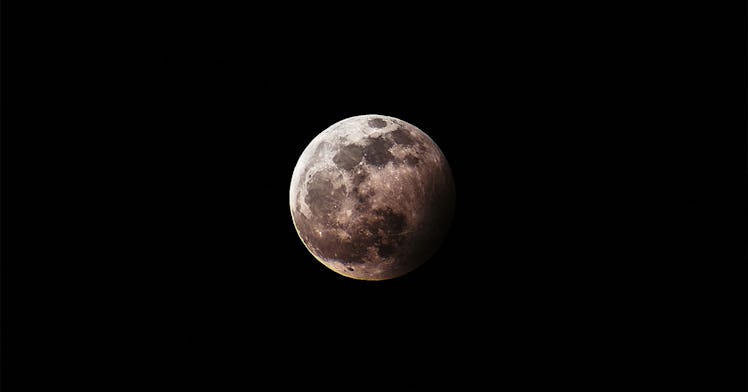The Moon Is Really Putting on a Show Over the Next Two Weeks
Things get started with a penumbral lunar eclipse on Monday morning.

Those who can manage to wake up early on the morning of November 30th — a Monday — will be rewarded with a view of the fourth and final penumbral lunar eclipse of the year. And it’s just the first half of a lunar double feature at the beginning of a series of wonderful sky events.
The penumbra is the Earth’s fuzzy outer shadow, so a penumbral lunar eclipse is when the moon crosses into that shadow. It’s part of a situation (delightfully) called a syzygy in which the sun, the Earth, and the moon are aligned.
On the morning of November 30, this syzygy will result in a gradual darkening of 83 percent of the moon’s surface, a disconcerting view of Earth’s only satellite as a dim grey orb and not the bright presence in the sky it normally is. While it is the fourth penumbral lunar eclipse of the year, it will be much more noticeable than the others, due to the sheer amount of how much of the moon will be darkened. The Fourth of July eclipse, for instance, shrouded only 35 percent of the moon and was hardly noticeable to the naked eye.
The peak of the penumbral lunar eclipse will occur at precisely 4:42 a.m. in the East and 1:42 a.m. in Pacific time, meaning that early-rising parents or those who have to get up in the middle of the night on the west coast for a bottle feed are the most likely to benefit from the lunar event. It will begin to cross in and continue to cross out of the show for about two hours on either side of the peak, so there will be plenty of time to admire the view.
This particular alignment also means that the Earth, moon, and sun will be in the correct positions two weeks later in mid-December to cause a total solar eclipse. Alas, you’ll have to be in southern Chile or Argentina to experience the nine seconds of totality.
But even if you can’t make it down to South America, isn’t it nice to know that no matter how bad things get down here on Earth, that outer space will always be there to put on a show?
This article was originally published on